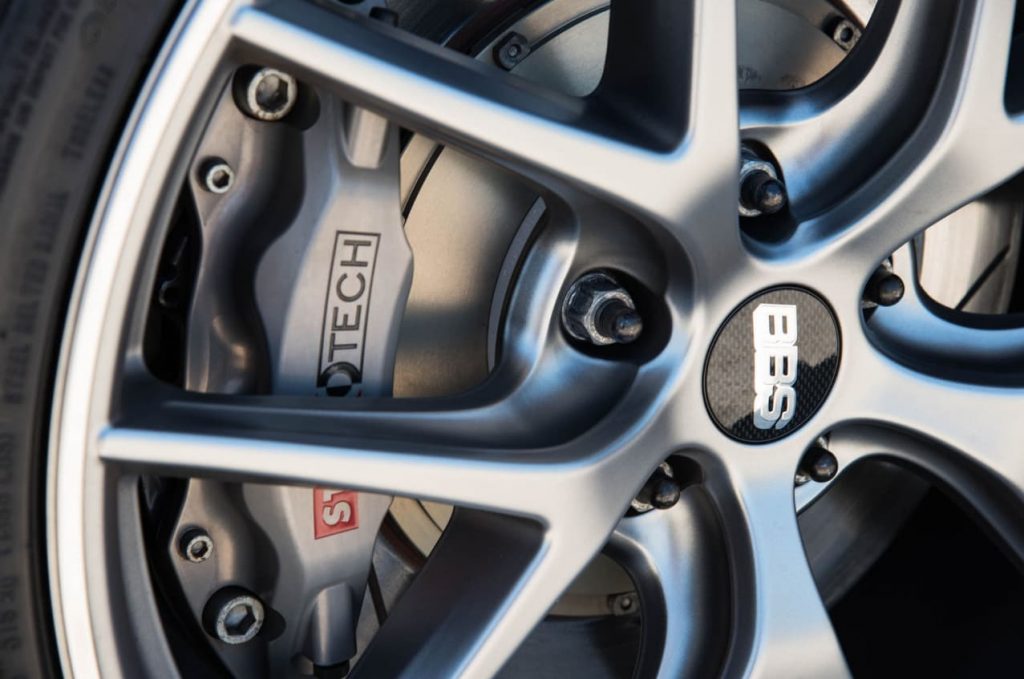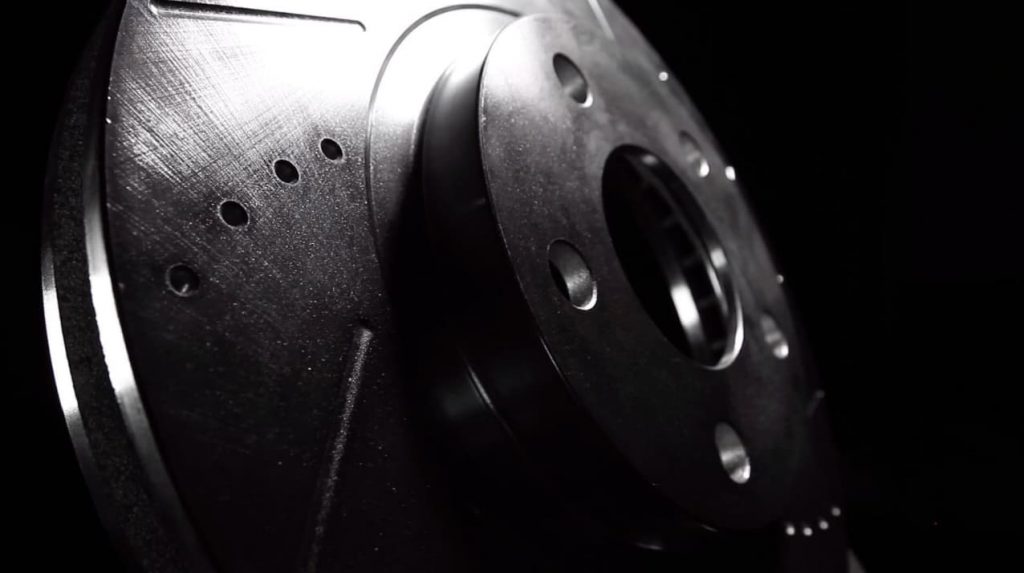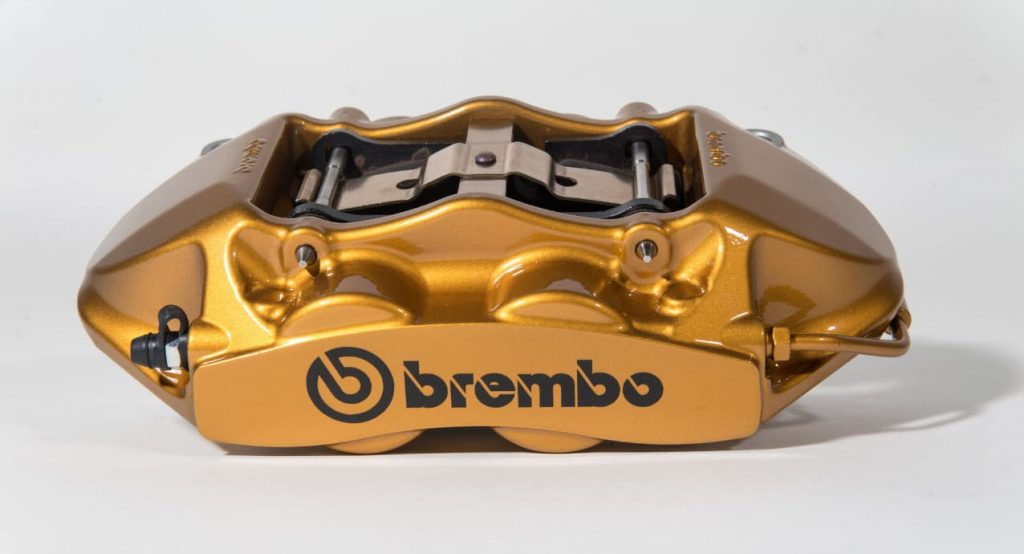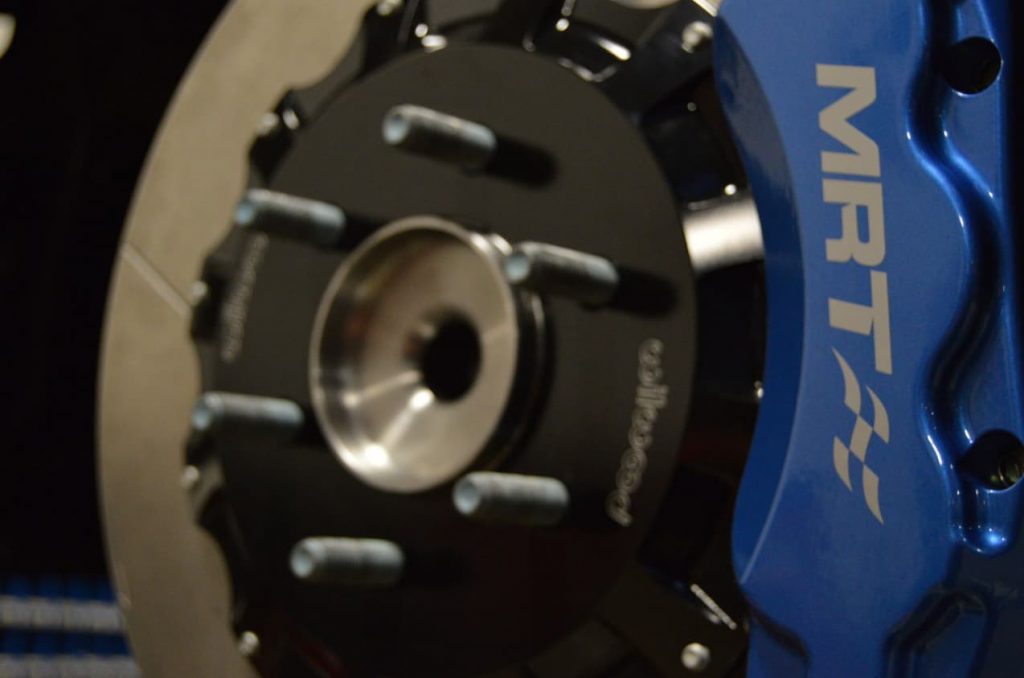Cars are getting more and more powerful every year, and heavier as well. To assist in the stopping of these two-ton masses of metal and plastic hurtling down highways and around racetracks, brake technology has evolved just as fast as everything else. Cars come from the factory with everything from older-style drum brakes in the rear and solid cast iron disc brakes in the front to giant carbon-ceramic, multi-piston caliper braking systems at all four corners. Whether you’re commuting in traffic every day or lapping a track day special every weekend, it’s important to be aware of both how your brakes work and how you can improve their performance.

Brakes themselves are comprised of a few different components. The most important ones to know are the rotors, calipers, and pads. Rotors are the big metal discs that spin around with the wheels. They come in a variety of different materials, finishes, and styles, but all accomplish the same function: acting as a friction surface that can dissipate heat as they are pressed against. Brake calipers are what clamp down on the rotors. They are attached to the suspension knuckle, sitting in a fixed position as the rotors spin, and apply friction to the spinning rotor to slow it down. They can have as few as one or as many as six or more pistons that press against the rotor, forcing the brake rotor and the wheel rotating with it to a halt. In between the calipers and the rotors are the brake pads. Brake pads at as the contact surface for the brake calipers against the rotors: instead of metal piston on spinning rotor, brake pads use a softer compound that degrades over time instead of scarring the surface of the rotor itself. Brake pads and rotors can be made out of an abundance of different materials and in many different styles.
Rotors

Brake rotors that come on standard passenger cars are usually made of cast iron. Cast iron rotors are cheap to manufacture and dissipate heat well enough for normal road use (commuting and stop-and-go traffic). For racing, a common upgrade is steel brake rotors. These can be either solid or layered. While steel rotors are significantly lighter than iron ones, solid steel rotors are prone to warping, and more resilient layered steel rotors are far more expensive. Aluminum rotors are very capable at dissipating low amounts of heat, but are fairly malleable under high temperatures, and thus restricted to much lighter vehicles like motorcycles and UTVs. High-carbon rotors are actually iron rotors, but with a lot of carbon mixed into their compound. They are much quieter, more rigid, and less prone to fade than standard iron rotors, but are significantly more expensive. Lastly, there are ceramic brakes rotors. Ceramic rotors offer the biggest improvement in heat capacity over cast iron– if you’ve ever seen high-end racecars lapping tracks at night, you’ll be familiar with the red-hot glow of superheated carbon-ceramic brakes. Because they are able to absorb and purge heat so quickly, ceramic rotors are currently the ultimate in performance braking materials.
Brake rotors are found with a variety of different finishes, with everything from an anodized flat surface to an imprint of Hello Kitty (http://www.norcalautostylez.com/product-p/hellokittyrotor.htm) to a swiss-cheese combination of slots, dimples, and drilled holes. Surface patterns are largely down to personal preference, as modern braking systems expel heat well enough through their materials that they don’t need any extra help. I.E., smooth faced, vented rotors are fine for 99% of people. If you’re looking for an excuse to get something cool, slotted rotors are able to provide an escape for spent material and the hot gases created by braking pressure so that they don’t coat the rotor and decrease braking performance.
Pads

Brake pads are the quickest and easiest way to upgrade your braking performance. They’re the thing that goes in between your caliper pistons and the rotors, so you’re not just pressing metal against bare metal. Brake pads are found primarily in four different compounds: non-asbestos/organic, non-asbestos/organic (low-metallic content), semi-metallic, and ceramic. These compounds can be thought of like particleboard: they are made of bits of metal, cellulose, glass, rubber, or kevlar fibers combined with resin and molded into the shapes you see on your brake pads, then baked for a few hours to increase their durability. Your car’s OEM equipment probably uses semi-metallic brake pads. These are a combination of synthetic materials and up to 60% metal materials including steel wool, wire, copper, and others. The metal component makes semi-metallic brake pads far more resistant to heat and wear than organic compound rotors, meaning they will create less brake dust and be more consistent in their performance even at high heat levels. However, this component also causes the pads to wear the rotors faster, especially when the pads are in need of replacement. Like ceramic rotors, ceramic performance brake pads are the significant upgrade over steel compound semi-metallic pads, but are only truly necessary in extreme applications. Ceramic pads are so good at dissipating heat that they likely won’t even warm up to their normal operating temperature during street use, and as such will create an incredible amount of noise and make everyone around you think your car is broken.
Calipers

Higher end calipers are usually found in the form of a “big brake kit,” with more pistons or a redesigned layout from stock. Calipers are the last thing you should look at upgrading. This isn’t because they’re not effective– they’re a SERIOUS stopping power upgrade. They just aren’t as much of an improvement per dollar as pads or rotors. As well as that, upgrading your calipers absolutely means changing your pads as well, and likely upgrading to a larger brake rotor. While you’re doing that, you may have to upgrade to larger wheels to fit the larger caliper, and larger tires to fit around those wheels– the list goes on, and the numbers on your grand total price tick over.
So… What do I do with this information?
So now you know what every major part of the braking system does. But if you really want to upgrade, what should you do? It really depends on what you’re doing with the car. Are you tracking every weekend? Layered steel rotors and ceramic pads are in the cards for you. Are you “delivering tofu” to the other side of Mount Akina every night? Maybe a set of fancy looking high-carbon rotors and high-metal content performance pads will do the trick. Going 20 miles on the highway to and from work in a daily driver? At that point, low-metallic content NAO pads and some cool cross-drilled rotors should be more than enough. Whatever your needs are, check out performance brake upgrades from companies like EBC, Hawk, Wilwood, Baer, Stoptech and more at the Motoroso Marketplace, as well as tons of other go-fast goodies and accessories for everything you drive.




